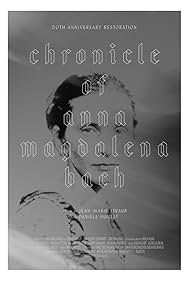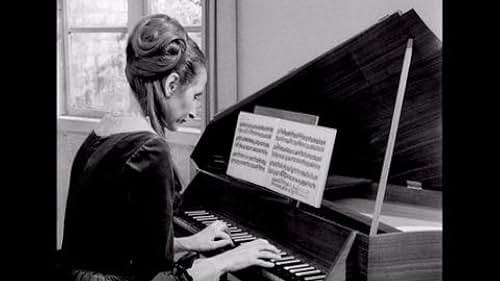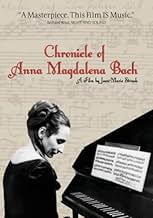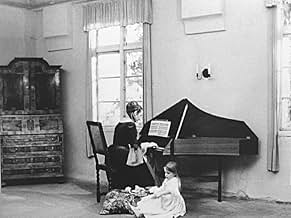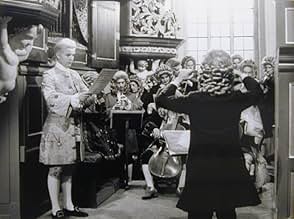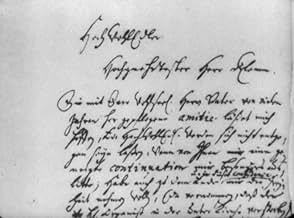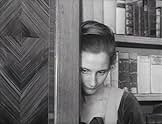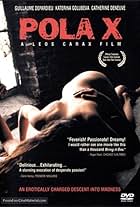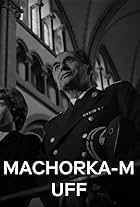IMDb RATING
6.8/10
1.6K
YOUR RATING
The life and music of Johann Sebastian Bach as presented by his wife, Anna.The life and music of Johann Sebastian Bach as presented by his wife, Anna.The life and music of Johann Sebastian Bach as presented by his wife, Anna.
- Awards
- 2 wins & 1 nomination
- Directors
- Writers
- All cast & crew
- Production, box office & more at IMDbPro
Storyline
Did you know
- TriviaGustav Leonhardt portrays Bach in his only performance as an actor. He is a music scholar of International renown, specialized in the works of Johann Sebastian Bach, and a harpsichord virtuoso whose Bach recordings (both as harpsichord player and conductor) are among the finest to be found in recording History.
- ConnectionsEdited into Wrong Move (1975)
- SoundtracksBrandenburg Concerto No. 5, BWV 1050 - Allegro I
Composed by Johann Sebastian Bach
Featured review
The Chronicle of Anna Magdalena Bach, directed by Jean-Marie Straub and Danièle Huillet, is a
chef-d'oeuvre that transcends traditional categorizations of cinema. This film is a unique blend
of period feature film, biopic, documentary/experimental film-making, and TV movies, offering
viewers a new horizon to the future of media productions. Despite receiving bitter criticism from
the majority of film critics, the film's formalistic approach, inspired by the musical forms of Bach's
music presented in the film (such as the exemplary fugue-like structure of a scene), redefines all
clichéd definitions of film categories, making it a timeless classic that has left a lasting
impression on many progressive filmmakers of the next generation.
One of the most striking aspects of the film is its release date, which coincided with the political turmoil of 1968. This timing links the apolitical facade of the film to its contemporaneous political context and transforms it into a reactionary political artwork, making it an emblematic example of German post-war cinema. However, the film's significant presentation of every "documented" document in the film, including Bach's manuscripts, and the portrayal of Gustav Leonhard, a legendary harpsichordist of his own right, as the lead character who personifies Bach, turn the film into a magnificent "musical document" of all times, even if it is historically inaccurate.
In The Chronicle of Anna Magdalena Bach, Straub and Huillet have pushed the boundaries of period feature film, biopic, docufiction, and educational TV programs (like that of Rossellini's) into an integrated, multifaceted arthouse film. They have masterfully managed to offer a new horizon to the future of media productions and paved the way for more complex intellectual free- forms, bringing different cinematic principles together. This achievement is perhaps reminiscent of the Nietzschean idea of compositum mixtum, which suggests the unification of incongruent elements to create a new and harmonious whole.
In conclusion, The Chronicle of Anna Magdalena Bach is a film that is not only a masterpiece of its time but also an example of how different forms of art can be seamlessly blended together to create a new artistic form. Its impact on the future of media productions is undeniable, and it remains a timeless classic that should be appreciated for years to come.
One of the most striking aspects of the film is its release date, which coincided with the political turmoil of 1968. This timing links the apolitical facade of the film to its contemporaneous political context and transforms it into a reactionary political artwork, making it an emblematic example of German post-war cinema. However, the film's significant presentation of every "documented" document in the film, including Bach's manuscripts, and the portrayal of Gustav Leonhard, a legendary harpsichordist of his own right, as the lead character who personifies Bach, turn the film into a magnificent "musical document" of all times, even if it is historically inaccurate.
In The Chronicle of Anna Magdalena Bach, Straub and Huillet have pushed the boundaries of period feature film, biopic, docufiction, and educational TV programs (like that of Rossellini's) into an integrated, multifaceted arthouse film. They have masterfully managed to offer a new horizon to the future of media productions and paved the way for more complex intellectual free- forms, bringing different cinematic principles together. This achievement is perhaps reminiscent of the Nietzschean idea of compositum mixtum, which suggests the unification of incongruent elements to create a new and harmonious whole.
In conclusion, The Chronicle of Anna Magdalena Bach is a film that is not only a masterpiece of its time but also an example of how different forms of art can be seamlessly blended together to create a new artistic form. Its impact on the future of media productions is undeniable, and it remains a timeless classic that should be appreciated for years to come.
- How long is The Chronicle of Anna Magdalena Bach?Powered by Alexa
Details
- Release date
- Countries of origin
- Language
- Also known as
- Chronik der Anna Magdalena Bach
- Filming locations
- Production companies
- See more company credits at IMDbPro
Box office
- Gross US & Canada
- $17,527
- Opening weekend US & Canada
- $3,453
- Mar 4, 2018
- Gross worldwide
- $17,527
- Runtime1 hour 34 minutes
- Color
- Sound mix
- Aspect ratio
- 1.37 : 1
Contribute to this page
Suggest an edit or add missing content

Top Gap
By what name was The Chronicle of Anna Magdalena Bach (1968) officially released in India in English?
Answer